Throughout history, Earth has been home to some truly enormous land mammals, many of which dwarfed even the largest animals we see today. These creatures roamed continents millions of years ago, shaping ecosystems with their immense size and strength. Their fossils provide a window into a time when megafauna dominated the landscape, offering clues about the environments they inhabited and the challenges they faced. While many of these species are now extinct, they continue to captivate scientists and the public alike. In this article, we explore the largest land mammals ever and uncover the fascinating details of their lives.
Josephoartigasia
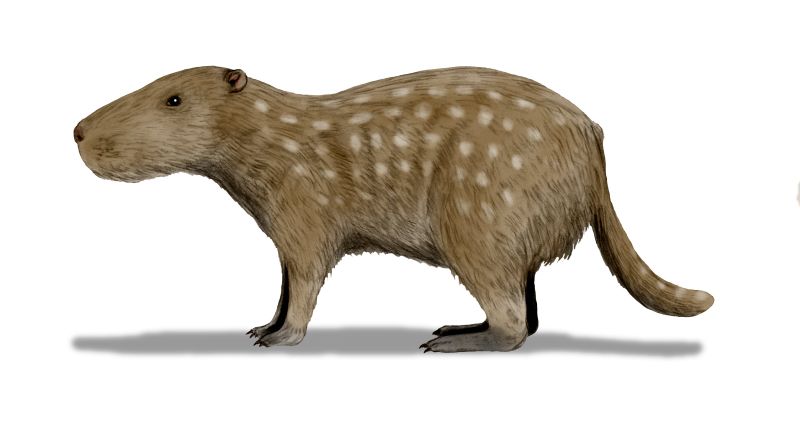
Josephoartigasia was the largest rodent ever discovered, weighing up to 2,000 pounds and measuring approximately 10 feet long. This prehistoric rodent lived during the Pleistocene epoch in South America, around 2 to 4 million years ago. Unlike modern rodents, it had oversized incisors, which likely served multiple purposes, from feeding on soft plants and fruits to being a sexually selected trait. These rodent giants may have also used their large teeth to defend themselves from predators or fight over mates. Fossil evidence indicates they lived near water sources, much like modern capybaras. Their large size is thought to have provided them some protection from predators, although they coexisted with other giant species, including terror birds. Their extinction is believed to be linked to climate changes that impacted their food sources. Additionally, their unique dentition and skeletal structure have provided paleontologists with significant insights into the evolution of rodents and their environmental adaptations. The sheer size of it has made it an iconic example of Pleistocene megafauna.
Glyptodon
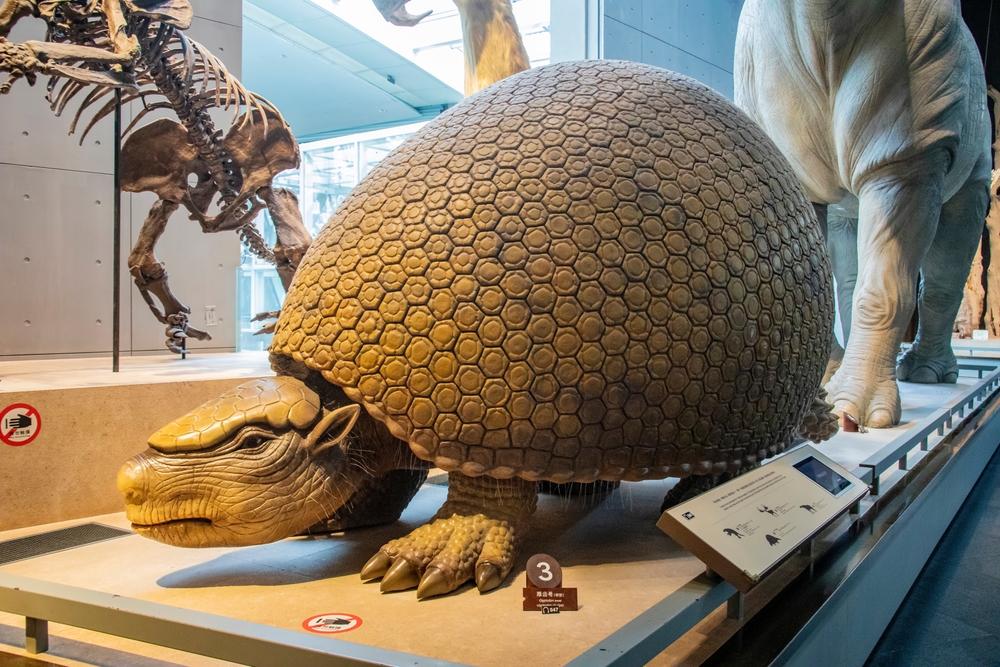
Glyptodon was an enormous, armored armadillo-like mammal that lived during the Pleistocene epoch in South America, weighing up to 2,000 pounds. Its distinctive shell, which resembled a turtle’s, was made of bony plates that protected it from predators. This herbivore primarily fed on grasses and other vegetation in its environment, thriving in open areas such as plains and grasslands. Its large size and heavy armor made it a slow mover, which may have made it vulnerable to human hunters who likely contributed to its extinction around 10,000 years ago. Its remains have been found across South America, with some early human groups possibly using its shell as a shelter. Unlike its modern-day armadillo relatives, it could not roll into a ball for protection, relying instead on its robust body armor. This animal’s discovery has offered significant insights into the megafauna of prehistoric South America and how early humans interacted with these giant creatures. Its extinction is part of a larger pattern of megafaunal losses during the Late Pleistocene.
Simbakubwa kutokaafrika
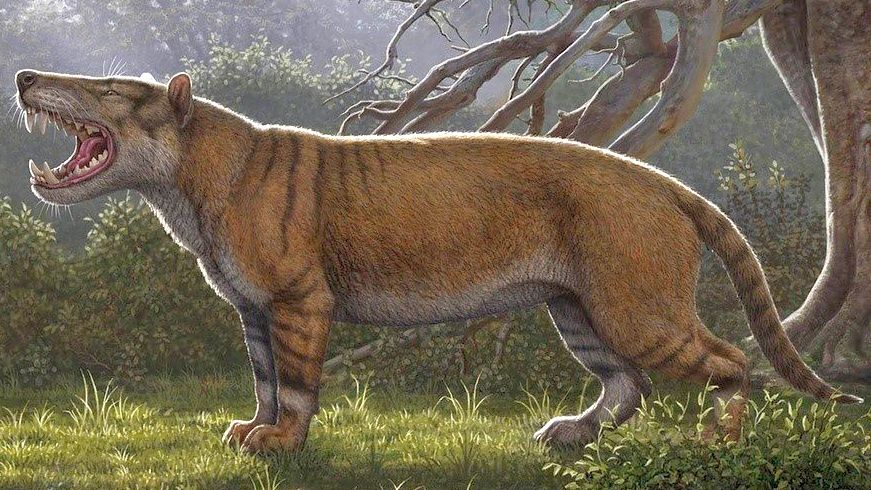
Simbakubwa kutokaafrika was a giant carnivorous mammal that lived in Africa during the Miocene epoch, approximately 22 million years ago, and is estimated to have weighed around 1 to 1.5 tons. Despite its name, which means “great lion” in Swahili, it was not related to modern cats but belonged to a group called hyaenodonts. Fossil evidence indicates that it was one of the largest terrestrial carnivores of its time, with powerful jaws and specialized teeth for slicing meat. It likely preyed on large herbivores that roamed Africa at the time. Its discovery in Kenya highlights the diversity of prehistoric African mammals and the role of hyaenodonts as apex predators before modern carnivores evolved. The species was initially misidentified and stored in a museum for years before being properly studied and named in 2019. This find has shed new light on the evolutionary history of carnivorous mammals in Africa and the shifting ecosystems of the Miocene period.
Diprotodon
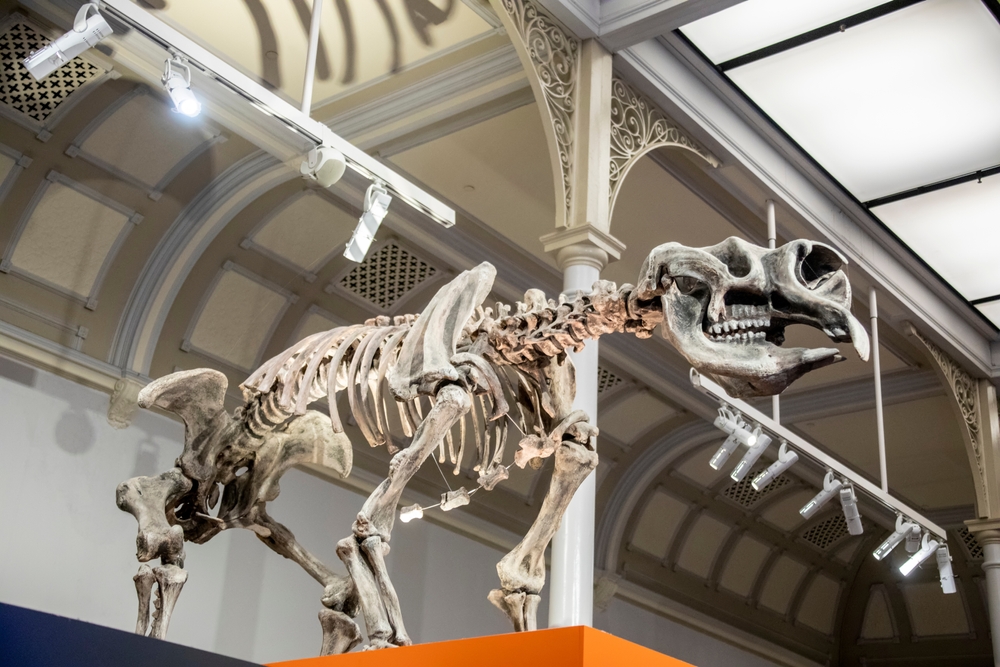
Diprotodon, also known as the giant wombat, was the largest marsupial that ever lived, reaching up to 2 tons in weight. Native to Australia, this massive creature roamed the plains and forests of the continent during the Pleistocene, around 2 million to 45,000 years ago. With its large, bulky frame and herbivorous diet, it mainly fed on shrubs and grasses, particularly the saltbush plants. Its extinction likely resulted from a combination of human hunting and environmental changes. It is closely related to modern wombats and koalas, though it was much larger in size. Its remains have been found in many parts of Australia, suggesting that it was once widespread across the continent. Some fossils show that early humans may have hunted them, adding to the pressures that led to their decline.
Arctotherium
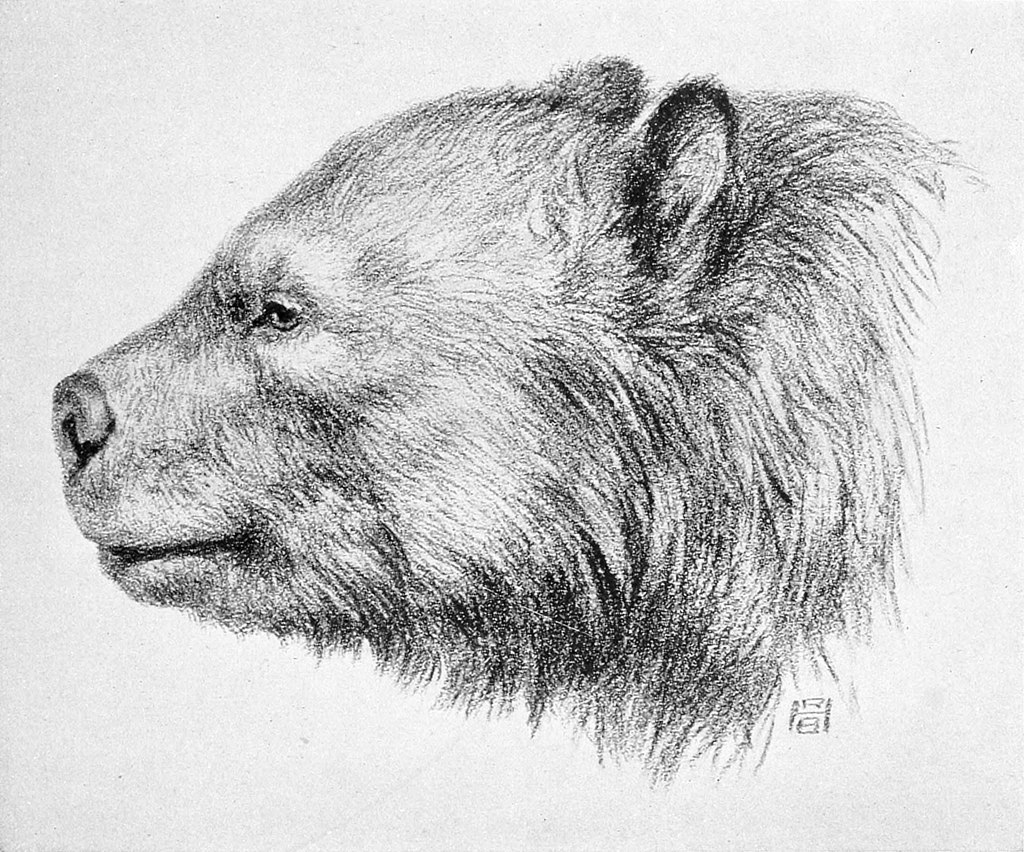
Arctotherium was a genus of giant short-faced bears that lived in South America during the Pleistocene, weighing up to 2 tons. They were among the largest terrestrial carnivores ever, surpassing even modern polar bears in size. Their fossils suggest that they had robust, powerful limbs, which were likely used for scavenging and possibly for hunting large prey. It evolved from its North American counterpart, Arctodus, and spread into South America during the Great American Interchange. The species likely consumed a varied diet, including fruits, nuts, and meat, making it an omnivore with opportunistic feeding habits. Its extinction around 12,000 years ago coincided with the disappearance of other large mammals, likely due to climatic changes and increased human activity. Despite its formidable size, it may have faced competition from other large carnivores and early human settlers. The discovery of its fossils has helped paleontologists better understand the migration patterns of megafauna between North and South America.
Megatherium
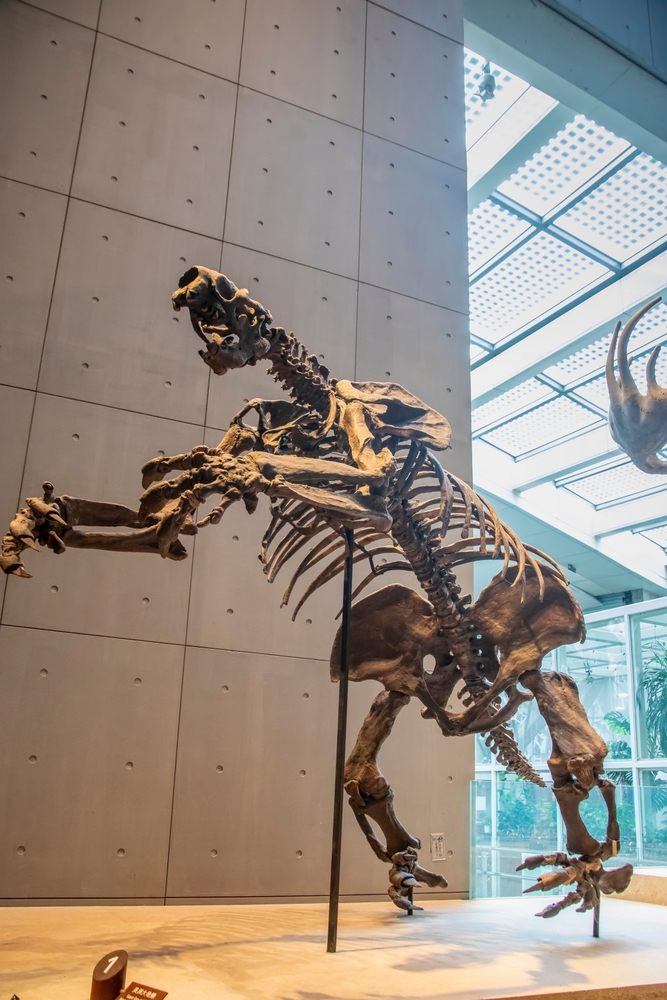
Megatherium, or the giant ground sloth, was a prehistoric mammal that lived in South America from the Pliocene to the Pleistocene, weighing up to 4 tons. Standing on its hind legs, it could reach up to 20 feet in length, towering over most other animals in its environment. Despite its size, it was a herbivore, feeding on leaves, fruits, and other vegetation. Its large claws were likely used for pulling down branches and possibly for defense against predators. It thrived in the forests and grasslands of South America, coexisting with early humans who may have hunted it. Fossil evidence suggests that it went extinct around 10,000 years ago, possibly due to a combination of human hunting and climate change. The giant sloth’s size and unique adaptations have made it one of the most iconic megafauna of the prehistoric Americas. The study of Megatherium has helped scientists understand the diverse ecosystems of ancient South America and the interactions between large herbivores and their environments.
Elasmotherium
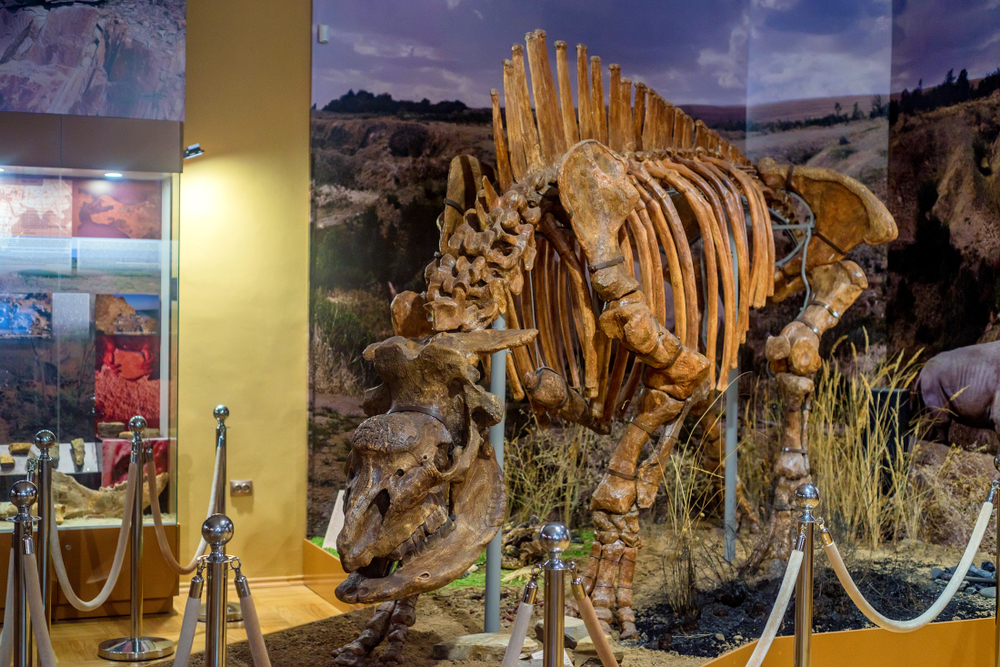
Elasmotherium, often referred to as the “Siberian unicorn,” was a large prehistoric rhinoceros that lived in Eurasia during the late Pliocene to the Pleistocene epoch, around 2.6 million to 39,000 years ago. This enormous mammal weighed approximately 4 to 5 tons and was known for its long, pointed horn, which could have been up to six feet in length. Unlike modern rhinos, it had a distinctive hump on its back, which likely supported large neck muscles to hold up its massive skull and horn. Fossils suggest that this herbivore roamed grasslands and steppes, grazing on tough vegetation like grasses. It is believed that the species went extinct due to climate change and possibly human hunting, although it lived alongside early humans for some time. Its disappearance coincided with the decline of other large megafauna during the last Ice Age. The legendary horn may have given rise to myths about unicorns in ancient cultures. The large body and unique horn of Elasmotherium continue to intrigue paleontologists, and some fossils indicate that it may have survived longer than previously thought in isolated regions of Siberia.
Deinotherium
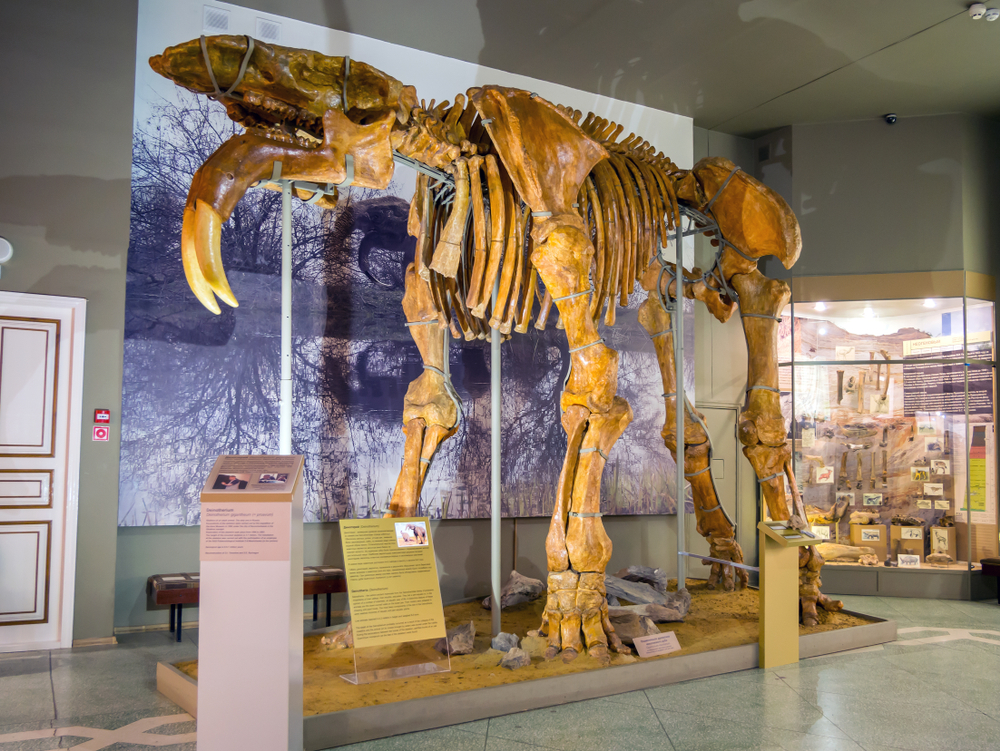
Deinotherium was a massive elephant-like creature that roamed Europe, Asia, and Africa from the late Miocene to the early Pleistocene, around 8 to 1 million years ago. Weighing up to 14 tons, it was one of the largest proboscideans ever, slightly smaller only than the mammoth. Unlike modern elephants, it had downward-curving tusks attached to its lower jaw, which likely aided in stripping bark from trees or digging for roots. Its large, pillar-like legs and a relatively straight back made it well-suited for walking across vast distances in search of food. Fossil evidence suggests that it lived in woodlands and open plains, feeding on a variety of plant material. The extinction of Deinotherium likely resulted from changes in climate that affected its habitat, as well as competition from other large herbivores. Its distinct appearance, especially the unusual tusks, has made it one of the most striking extinct megafauna species. Its presence in both Europe and Africa offers insight into the migration patterns and evolution of large herbivores across continents. Its fossil record helps scientists understand the environmental changes that occurred during the late Miocene and Pleistocene epochs.
Mammuthus trogontherii (Steppe Mammoth)
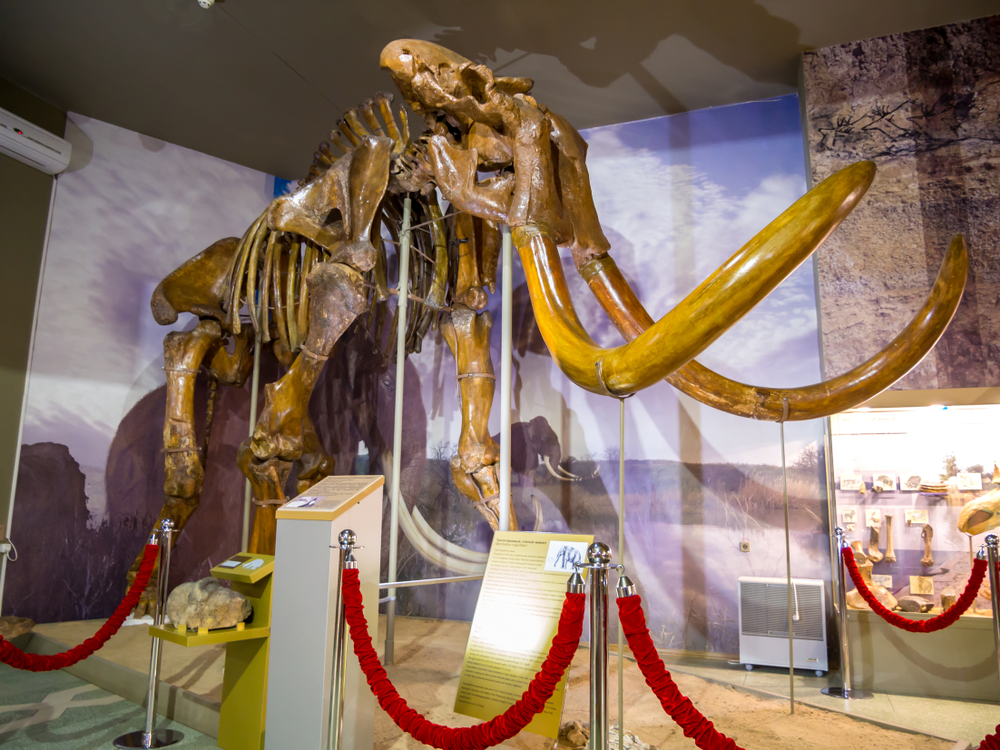
Mammuthus trogontherii, also known as the Steppe Mammoth, was one of the largest mammoths to ever exist, weighing between 9 to 14.3 tons. It lived during the Middle Pleistocene epoch, around 600,000 to 370,000 years ago, and roamed across vast regions of northern Eurasia. This giant herbivore was a predecessor to the more famous Woolly Mammoth, though it was even larger in size. Standing around 13 to 15 feet tall at the shoulder, it fed primarily on grasses and shrubs, much like modern elephants. Its long, curved tusks, which could reach up to 16 feet in length, were likely used for foraging and fighting. Fossil evidence suggests that it adapted to the cold, open steppe environments, which gave it its name. It went extinct as the climate continued to change, leading to the rise of other mammoth species. The discovery of its fossils has provided valuable insight into the evolutionary lineage of mammoths and the environmental conditions they faced.
Paraceratherium
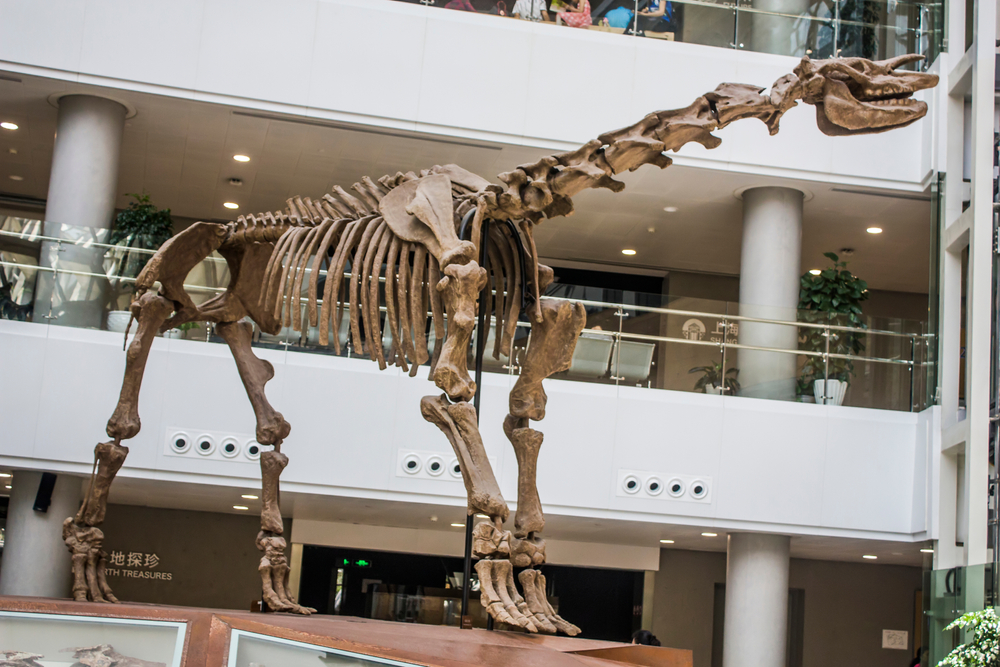
Paraceratherium, the largest land mammal ever known, was a gigantic hornless rhinoceros that lived during the Oligocene epoch, weighing up to 20 tons. This behemoth was native to the vast open plains of Eurasia, where it fed on tall trees and other vegetation. It had a long neck, allowing it to reach food that was out of reach for other herbivores, similar to modern-day giraffes. Despite its immense size, it was likely a slow-moving, gentle giant, relying on its size to protect itself from predators. Fossil evidence suggests that this massive mammal lived about 34 to 23 million years ago. Its extinction is believed to be the result of changing climates and the gradual disappearance of its food sources. The discovery of its fossils has offered valuable insights into the evolution of large herbivores and the ecosystems they inhabited.
This article originally appeared on Rarest.org.
More from Rarest.org
13 Unique Underwater Ecosystems You Can Explore

Exploring underwater ecosystems is a breathtaking adventure. Each destination offers a unique glimpse into the marine world. From vibrant coral reefs to mysterious deep-sea formations, these ecosystems are home to a diverse array of marine life. Read More.
15 Towering Sand Dunes Creating Otherworldly Landscapes

Towering sand dunes are some of the most mesmerizing natural wonders on Earth, creating landscapes that seem almost otherworldly. These colossal formations, sculpted by wind and time, rise dramatically from the ground, offering breathtaking views and a sense of awe to those who witness them. Read More.
22 Striking Reptiles with Unusual Color Patterns
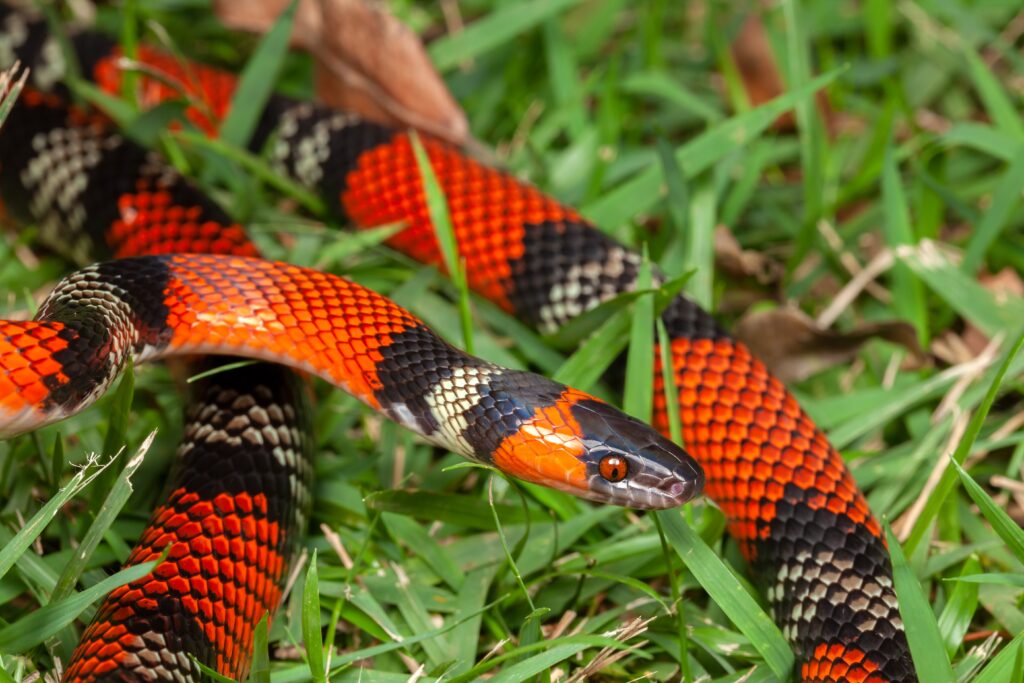
Reptiles are known for their impressive variety, and some species boast truly striking color patterns. Their coloration not only serves a purpose in camouflage or mating but also highlights the incredible diversity of the reptile world. Read More.
